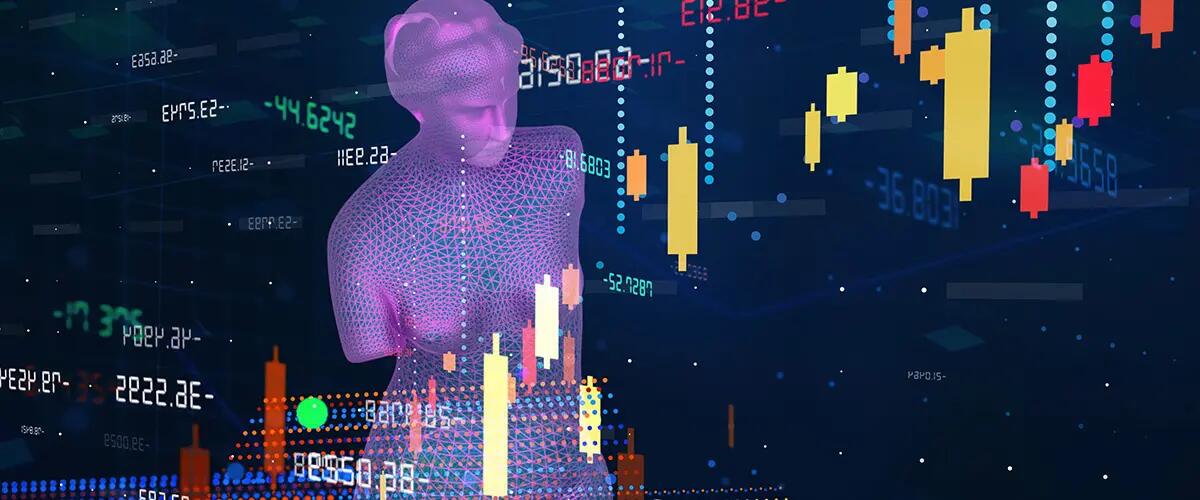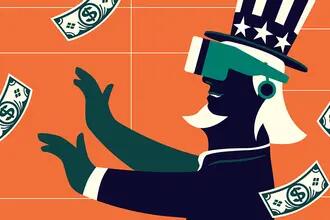
Illustration: Getty Images
Thought Leadership: What are non-fungible tokens and why is there so much hype?
This article was originally published on Nasdaq.com. It was written by Rutgers Business School fintech professor Merav Ozair.
Non-Fungible Tokens (NFTs) have been getting a lot of media attention. This is, no doubt, partly a consequence of celebrities auctioning their NFTs for hundreds of thousands of dollars (a photo of a LeBron James dunk sold for $400K), if not millions of dollars (Jack Dorsey's first tweet sold for $2.9 million) – creating a sense of hype and celebrity status, giving the impression that anyone can create an NFT and auction it for millions of dollars.
The media often explains NFTs as “collectibles” and while NFTs can be used that way, that is only one type of a variety of possible use-cases.
So, what are NFTs?
The concept of an asset being fungible versus non-fungible is not new, but the digitization (or tokenization) of these assets is what make NFTs noteworthy.
First, let’s understand the difference between “fungible” and “non-fungible.” A fungible asset is an asset with interchangeable, sometimes indistinguishable, units. For example, dollar bills are interchangeable – each bill is worth the same, and it does not matter which one dollar bill you use to pay for goods or services. However, they may not be indistinguishable, as each bill has its own serial number. On the other hand, one ounce of gold is both interchangeable and indistinguishable.
Unlike fungible assets, non-fungible assets are unique, and not interchangeable. One example would be paintings by artists: Not only is a Rembrandt painting unique and different from a Picasso. Each Rembrandt painting is itself unique.
In the tokenization world, Bitcoin is the equivalent of a dollar bill. It is a fungible token, interchangeable but not indistinguishable. On the other hand, virtual art, like Beeple’s “Everydays: first 5,000 days” sold for 69 million dollars, is considered a non-fungible token. If NFTs represent a unique asset (i.e., one-of-a-kind), it is understandable why the current main usage of NFTs has been in creating NFTs of images or short videos, which are sold as collectibles.
NBA Top Shots, an NFT marketplace for basketball fans, created by Dapper Labs, which partnered with the National Basketball Association (NBA), is at the forefront of sports collectibles. Traditionally, sports enthusiasts collected physical sports items, such as baseball cards. Some of these are highly valued, like the Mickey Mantle card that sold for $5.2 million to actor and entrepreneur Rob Gough. You can think of NFTs offered on NBA Top Shots as a digital version of baseball cards.
Instead of having a paper card, which can be easily damaged or forged, an NFT is an authenticated digital card, minted (i.e., created) on a blockchain. Since it is created on a blockchain, it has all the features and benefits that underlies blockchain technology: It is immutable; once created, it cannot be changed, deleted, or forged; it has its own cryptographic authentication and time stamp of creation. All transactions are traceable – you can identify who the current owner is, and you can transfer or sell to anyone in the world.
NFTs can also do things that baseball cards can't.
They can enhance community engagement and loyalty. For example, in addition to selling Moments (i.e., digital cards), NBA Top Shots also engage their users with challenges, which provides them with a way to earn a card, pack or other reward based on what they already have in their collection, thus making it a more interactive experience.
NFTs can also come with “utility” perks. Luka Garza, who was named the best player in men’s college basketball in 2021, auctioned an NFT, which offered the buyer a game of HORSE with him, as well as a dinner and a meditation session with him.
At the time of auctioning, Garza was a college athlete and was not able to enjoy the proceeds of the auction, but as of June 2021, the NCAA voted to allow college athletes to benefit from name, image and likeness (NIS) opportunities, which will open new ways for fans to experience with college athletes. NFTs will certainly be one of the ways college athletes can try to monetize their NIS and for fans to engage not only with college athletes, but also with their affiliated colleges and universities.
Beyond sports, the band Kings of Leon gives us another example of issuing an NFT with “utility” perks. In March 2021, the band launched 18 NFT “golden tickets,” which gives the owner of the NFT access to four front-row seats during any Kings of Leon tour for life, and VIP experiences before the show. Unlike paper tickets, these digital tickets are digital assets, which utilizes blockchain technology, meaning they will live on the blockchain forever, and can be transferred, sold, or leased, enhancing their collectible value.
Other collectibles that have received much media and hype are algorithm-generated NFT collectibles. CryptoPunks, released in 2017, was the first such example. There are 10,000 unique images, all of which are made digitally scarce,utilizing blockchain technology. When they were first released in 2017, they did not get much attention, but during the NFT craze of 2021, their value increased significantly, with some valued at hundreds of thousands of dollars, and some are even worth millions.
Another such computer generated NFT collection which got celebrity status is the Bored Ape Yacht Club. It is billed as an exclusive society or social organization; owning one of their coveted NFTs unlocks that membership. This exclusive members-only club has an exclusive Discord server, where members hang out and chat. Members include celebrities such as Jimmy Fallon, Paris Hilton, Steph Curry and Snoop Dogg. The Bored Ape Yacht Club NFT collection has surpassed CryptoPunks both in terms of celebrity status and value.
During the NFT craze, the focus has been on images, art and collectibles. But NFT use cases and benefits go beyond collectibles or celebrity status: It has the potential to create new value and opportunities, even within the art and creative industry, and could democratize society by enabling new income streams for everyone everywhere.
For more on how NFTs can be used, for business or economic purposes, read the second part of this series: Non-Fungible Tokens (NFTs): Looking Beyond the Hype
Press: For all media inquiries see our Media Kit


